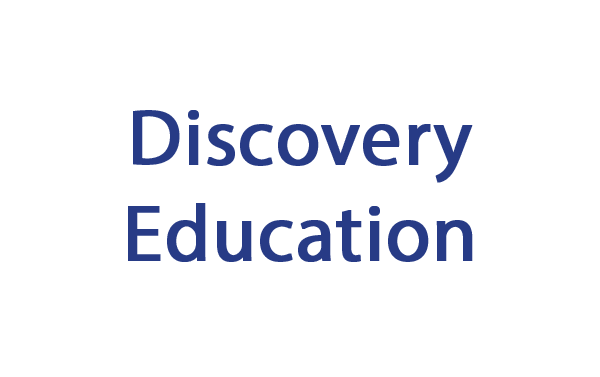

The Big Idea
Rainforests once covered 14% of our world’s surface. Now they cover less than 5%. Every second, an area of the rainforest the size of a football field is being destroyed. Some scientists believe that, if we lose our rainforests, we might put our whole planet at risk. What will we do to help save the rainforest?
Key Learning Goals - Geography:
2.05 Be able to use geographical terms
2.08 Be able to use maps at a variety of scales to locate the position and geographical features of particular localities
2.09 Be able to use secondary sources to obtain geographical information
2.10 Be able to express views on the features of an environment and the way it is being harmed or improved
2.11 Be able to communicate their geographical knowledge and understanding to ask and answer questions about geographical and environmental features
Key Learning Goals - Science:
2.01b Be able to prepare a simple investigation which is fair, with one changing factor
2.01c Be able to predict the outcome of investigations
2.01d Be able to use simple scientific equipment
2.01e Be able to test ideas using evidence from observation and measurement
2.01f Be able to link evidence to broader scientific knowledge and understanding
2.01g Be able to use evidence to draw conclusions
In Geography, we’ll be finding out:
- About where rainforests are in the world
- Which rainforest products we use in our everyday lives
- About the lives of rainforest people and how they compare with our own
- How and why the rainforest is being destroyed
- Discovering the ways that people are trying to save the rainforest
In ICT & Computing, we’ll be finding out:
- How to program and share our own rainforest-themed computer game
In Art, we’ll be finding out:
- About rainforest body art and painting our faces in a similar style
- How we can use art to create a rainforest scene
In Science, we’ll be finding out:
- About different rainforest animals and plants
- Where different animals and plants live in the rainforest
- About rocks and soils found on the forest floor
- About colour in the rainforest and how it is used by animals and plants
- Why plants have leaves and why they can be different
- About the best conditions to grow a plant
- About rainforest fruits and seeds
- How to grow our own rainforest plant from a seed
In Technology, we’ll be finding out:
- How to plan and make our own tropical fruit drink
In Music, we’ll be finding out:
- How to represent a rainforest scene using music
In Physical Education, we’ll be finding out:
- How to represent a rainforest scene using dance and mime
In International, we’ll be finding out:
- How different countries and organisations are helping to save our rainforests
In this BrainPOP movie, Tim and Moby discuss our home planet and tell you why it’s able to support life forms like us humans. Find out some of the reasons why Earth’s atmosphere and oceans are so critical to living things. And you’ll discover how we compare to other planets in our size, gravity, and interior make-up.
In this BrainPOP movie, Tim and Moby introduce you to various ways of talking about geography! You’ll discover the meaning of this term and think about some of the ways in which location, place, region, movement, and environment interact to produce unique geography. You’ll also find out how understanding the geography of a place can teach you about its culture and history, and why the movement of people around the world can impact the characteristics of the globe. What makes your home unique?
Want to take a break from it all and revel in nature's beauty? Take your pick from the 85 million acres of land the U.S. government has set aside for this very purpose. America's 59 national parks are large, protected areas off-limits to human settlement and land development. They provide shelter for rare wildlife and endangered species that are threatened by human activity. And they showcase incredible sights, such as Bryce Canyon's hoodoos, Arches Park's stone gateways, and Yellowstone's Old Faithful geyser! It took the activism of citizens like John Muir and the advocacy of elected officials like President Theodore Roosevelt to fight for our nation's natural treasures. A century after the creation of the National Park Service, its lands are more popular than ever, hosting more than 300 million annual visitors. It's up to all of us to ensure the parks are preserved for future generations.
From the air we breathe to the timber we use for shelter to the minerals we refine into metals, life just wouldn’t be livable without our natural resources. But what are the consequences of overuse? Join Tim and Moby in this BrainPOP movie as they look into these valuable commodities: what defines them, where they come from, and how we put them to use. You’ll find out about the difference between renewable and nonrenewable resources, and why we need to conserve both!
In this BrainPOP movie, Tim and Moby introduce you to the incredibly lush rainforest biome. You’ll find out just how many of the world’s species are found in this type of environment and why rainforests are sometimes called the lungs of the earth. Find out what a canopy is and why rainforest soil is poorer than you’d think. Most importantly, you’ll learn about some of the human activities that threaten the rainforest, and how those activities are causing rapid extinction there.
See more relevant resources on BrainPop
https://www.brainpop.com/science/earthsystem/
A collection filled with ideas for class projects and 'green' research. Explore the environment though themes such as 'going green', 'recycling' and 'water and energy'.
Use a range of videos and activities to understand different features of the British coastline.
An award-winning module designed to help improve our environment. It contains an archive of connected stories from the news, and ideas that can be developed into unique projects.
Sustainability – School survey
Following on from Sustainability, the survey tools included in this module can be used to assess your school and compare it with others.
See more relevant resources on Discovery Education
http://www.adventure-life.com/articles/indigenous-people-76/
Adventure Life has an informative ‘Question and Answer’- session about the indigenous people of the rainforests. Good for background information.
http://www.allaboutwildlife.com/rain-forest-food-web-top-predators
All About Wildlife has information on the top predators in the rainforest food chain, including a tarantula that eats birds!
http://www.amazon-rainforest.org/amazon-products.html
Amazon Rainforest features a list of products that are found in the rainforest.
http://www.animalcorner.co.uk/rainforests/canopy.html
Animal Corner features a diagram and excellent photographs to show the different layers of the rainforest.
http://news.bbc.co.uk/cbbcnews/hi/newsid_3540000/newsid_3546300/3546395.stm
BBC news feature, featuring facts and an interactive quiz on deforestation and the Amazon rainforest.
http://www.classicsforkids.com/games/
Classics for Kids has some fun music games, including the Note Name Game.
http://www.enchantedlearning.com/subjects/rainforest/
Enchanted Learning provides a simple and accessible overview to the topic, including a section that discusses location.
http://www.enchantedlearning.com/subjects/rainforest/animals/Rfbiomeanimals.shtml
Enchanted Learning provides a simple overview of the animals found in a rainforest, with links to labelled images.
http://fineartamerica.com/art/paintings/rainforest/all
Fine Art America has an excellent search facility, allowing you to explore contemporary examples of art on a specific theme.
http://www.gondwananet.com/tropical-rainforest-food-chain.html
Gondwana.net is an Australian website, featuring a section on food chains that are common to Australian rainforests.
Henri Rousseau is a French post-impressionist artist, most renowned for his rainforest paintings.
http://junglephotos.com/amazon/ammaps/rainforestmaps/rainforestmaps.shtml
Jungle Photos has a selection of close-up maps, showing rainforests in Latin America, Africa and South East Asia.
http://www.learninggamesforkids.com/featured-games/music_and_art_ games_musical_notes.html
Learning Games for Kids website has games to help children learn musical notes.
http://www.rainforestanimals.net/rainforest.html
Rainforest Animals provides a basic overview of different habitat layers, with links to further information on the wildlife that can be found there.
http://www.rainforesteducation.com/RFlife/intro.htm
Rainforest Education allows children to take a photographic tour of the forest floor, understory and canopy levels of a rainforest
http://www.rainforest-facts.com/rainforest-people.html
Rainforest Facts has a listing of rainforest tribes and a selection of photographs.
http://scratch.mit.edu/projects/53115486/#player
The ‘Banana Journey’- game helps children to program their own computer game.
http://www.rainforest-alliance.org/multimedia/trackitback
The ‘Track it Back’- game takes children through the different steps of production that rainforest foods go through before the reach the supermarket.
http://www.idahoforests.org/wood_you.htm
The Idaho Forests Commission explores all the many products that come from trees.
http://www.folklife.si.edu/resources/maroon/foodways/more.htm
The Maroon Foodways website provides a list of tropical rainforest products, including foods, woods, oils and medicines.
http://kids.mongabay.com/elementary/301.html
The Mongabay website has a basic introduction to rainforest peoples, accompanied by a selection of excellent photographs.
http://http://environment.nationalgeographic.com/environment/photos/ rainforestdeforestation/
The National Geographic website has an excellent photo gallery, highlighting the destruction of the world’-s rainforests.
http://www.nature.org/rainforests/explore/video.html
The Nature Conservancy hosts some excellent videos, exploring the rainforest of Brazil, Costa Rica, Indonesia and Hawaii.
The Rainforest Action Network is an international charity that campaigns for sustainable rainforest environments.
http://www.rainforest-alliance.org/kids
The Rainforest Alliance website has an excellent children’-s area, featuring a selection of videos showing specific rainforests around the world.
http://www.rainforest-alliance.org
The Rainforest Alliance works to conserve rainforest habitats through education, promoting related businesses and hands-on initiatives.
http://www.rainforestfoundationuk.org/All_Photos
The Rainforest Foundation is a UK organisation that tackles deforestation both locally and globally. The site has an excellent image gallery that includes examples of rainforest deforestation.
The World Land Trust (WLT) is an international conservation organisation dedicated to saving rainforest and other wildlife habitats.
http://www.matses.org/thematses.html
This website is dedicated to the Matses People of Brazil. It features some good images, as well as information on their culture and traditions.
http://www.youtube.com/watch?v=RXSyJ4CeUXo
Video: YouTube hosts this clip from the BBC, showing ‘The Lion King’- cast performing ‘The Circle of Life’.
http://www.youtube.com/watch?v=jgg0GIfbszg
Video: YouTube hosts this clip showing an experienced artist using the Ebru technique
https://www.youtube.com/watch?v=2xdchnPqOtM
How to protect the rainforest
https://www.youtube.com/watch?v=xPK2Ch90xWo
Topher White: What can save the rainforest? Your used cell phone






